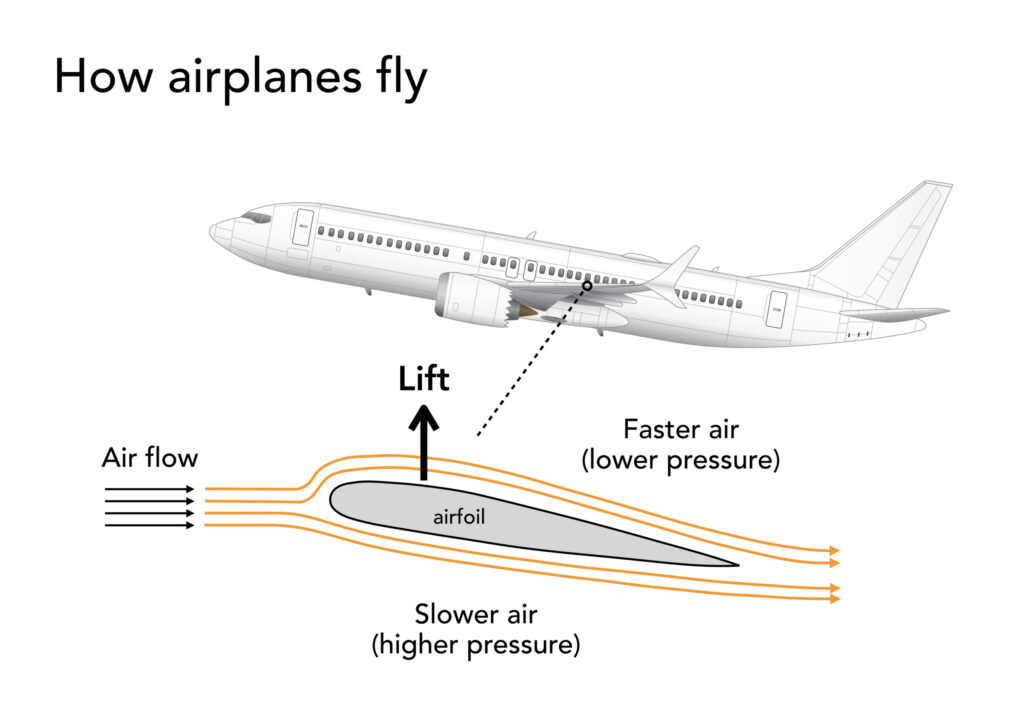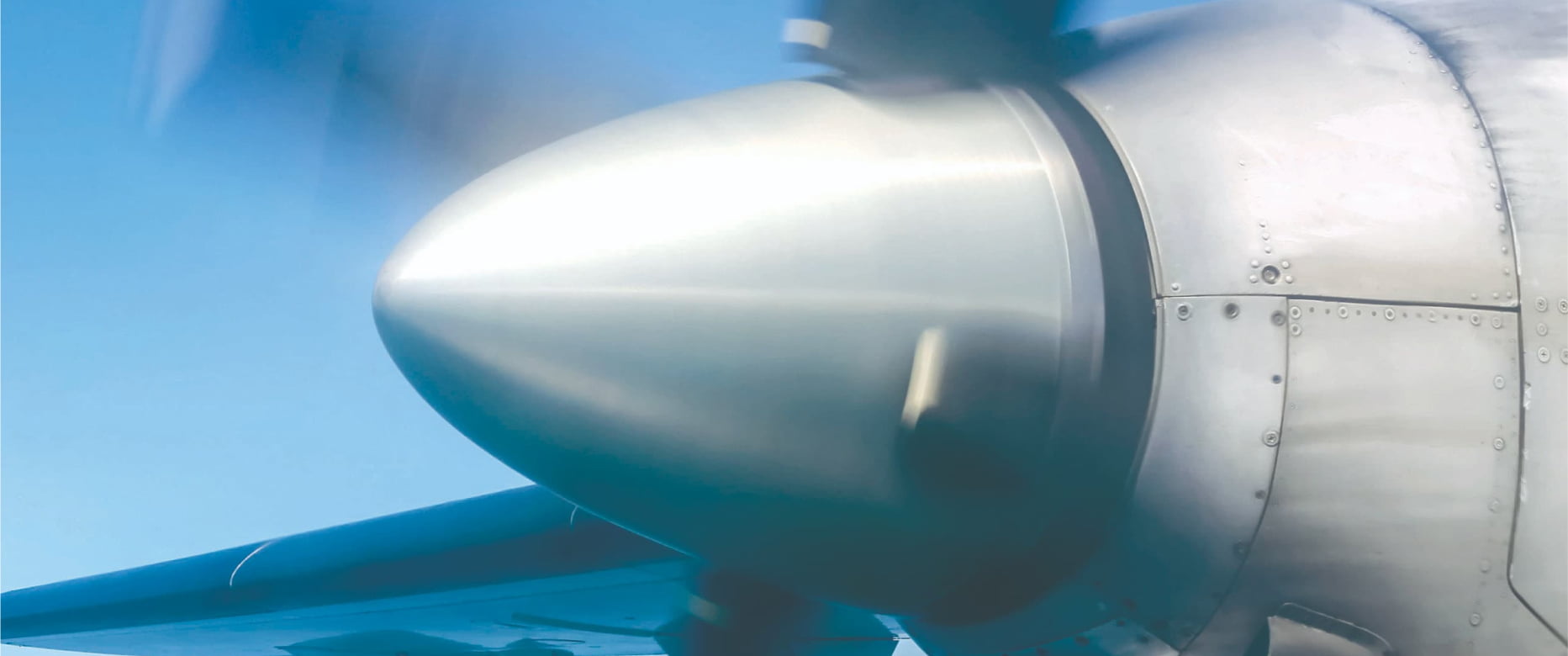Home > Skills > Merit Badges > Digital Resource Guides > Aviation > MB – Aviation – 1.F
Merit Badges > Digital Resource Guides > Aviation > 1.F


Aviation Merit Badge
Explain how an airfoil generates lift, specifically noting Bernoulli’s principle.
Now, let’s dive into how an airfoil (the shape of an airplane’s wing) generates lift, and we’ll touch on Bernoulli’s Principle because it plays a big role in this.
What is an Airfoil?
An airfoil is the shape of a wing, or any surface designed to produce lift. It has a curved top surface and a flatter bottom surface. This shape is crucial for creating the pressure differences that allow the airplane to fly.

How an Airfoil Generates Lift
The key to understanding how an airfoil generates lift lies in the difference in air pressure above and below the wing. As air flows over the wing, it splits to go over the top and under the bottom. Because of the curved shape of the top of the wing, the air over the top has to travel a longer path than the air underneath. To stay in sync with the air flowing below the wing, the air on top speeds up to cover that extra distance. The difference in air flow creates a vacuum effect on the top of the wing, pulling it upwards.
-
Air Moves Faster Over the Top
As air flows over the wing, it splits to go over the top and under the bottom. Because of the curved shape of the top of the wing, the air over the top has to travel a longer path than the air underneath. To stay in sync with the air flowing below the wing, the air on top speeds up to cover that extra distance. -
Compression
The engine has pistons that move up and down inside metal tubes called cylinders. Once the fuel-air mixture is inside the cylinder, the piston moves up and squeezes (compresses) the mixture, making it really dense and ready to explode.
Bernoulli’s Principle in Action
This is where Bernoulli’s Principle comes into play. Bernoulli’s Principle states that as the speed of a fluid (like air) increases, its pressure decreases, and as the speed of a fluid decreases, its pressure increases.
- On top of the wing, where the air moves faster, the pressure is lower.
- Under the wing, where the air moves slower, the pressure is higher.
This difference in pressure creates a lifting force. The higher pressure below the wing pushes the wing up toward the lower-pressure area above the wing, creating lift.
The Role of Angle of Attack
The angle of attack is the angle at which the wing meets the airflow. If the angle is too steep, the airflow over the top of the wing can become turbulent, reducing the lift (and possibly causing a stall). So, the angle of attack also plays a role in how effectively an airfoil generates lift.
The Role of Flaps and Slats
- Flaps are extensions on the back of a wing that can be extended or retracted) can increase lift, and also add drag – very useful for take-off and landing.
- Slats are sections on top of the wing that can be raised to reduce lift after the plane has landed.

Propellers are just rotating airfoils!
The wings are not the only airfoils on an airplane—so are propeller blades. They work by creating greater air pressure on one side of their surfaces than on the other. As the blades cut through the air, they pull or push the plane along because the pressure behind them is greater than the pressure in front. In fixed-wing, propeller driven aircraft, the propellers generate thrust though the multiple airfoils on each propeller. Variable-pitch propellers can increase the angle of attack on the blades, to change the efficiency in flight.
In rotary-wing aircraft, the propeller (and corresponding rotating airfoils) are simply mounted horizontally on top of the aircraft, to create lift and allow the aircraft to fly. They will also have a propeller on the tail of the aircraft that operates in the same way, to move the tail (and thus the aircraft) along the yaw (or vertical) axis.


Propellers are just rotating airfoils!
The wings are not the only airfoils on an airplane—so are propeller blades. They work by creating greater air pressure on one side of their surfaces than on the other. As the blades cut through the air, they pull or push the plane along because the pressure behind them is greater than the pressure in front. In fixed-wing, propeller driven aircraft, the propellers generate thrust though the multiple airfoils on each propeller. Variable-pitch propellers can increase the angle of attack on the blades, to change the efficiency in flight.
In rotary-wing aircraft, the propeller (and corresponding rotating airfoils) are simply mounted horizontally on top of the aircraft, to create lift and allow the aircraft to fly. They will also have a propeller on the tail of the aircraft that operates in the same way, to move the tail (and thus the aircraft) along the yaw (or vertical) axis.

To summarize
- Bernoulli’s Principle explains that faster-moving air (over the top of the wing) creates lower pressure, and slower-moving air (under the wing) creates higher pressure.
- This pressure difference causes a net upward force—lift—that helps the airplane stay in the air.

Important Points to Remember
- Bernoulli’s Principle explains the pressure difference caused by varying airspeed over the wing.
- Lift is the result of higher pressure below the wing and lower pressure above the wing.
- The airfoil shape (curved top and flatter bottom) is designed to encourage this difference in speed and pressure.
Check out this video to see Bernoulli’s principle in action!
How does the pilot actually control the aircraft, to simultaneously manage all the forces that act on the aircraft?






